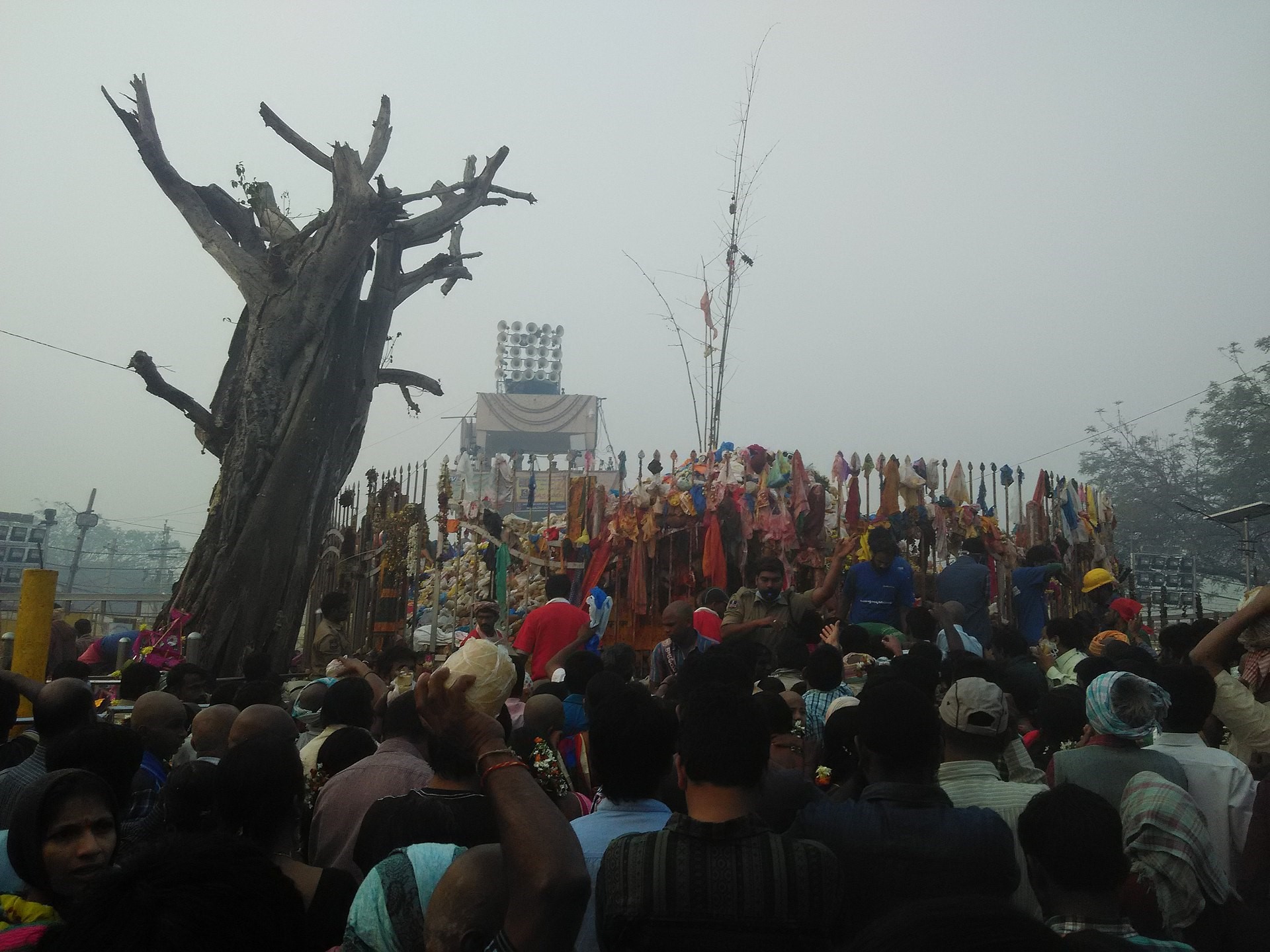Description

Disclaimer: Copyright infringement not intended.
Context
- Sammakka Saralamma Jatara, also known as Medaram Jatara, is a significant festival celebrated in the state of Telangana, India, to honor the Hindu Tribal goddesses.
Details
Historical Background
- Legends surrounding Sammakka date back to the 13th century, with tales of her miraculous powers and leadership among the tribal communities.
- Sammakka, found as a newborn surrounded by tigers, grew up to become a savior of the region's tribals. She was married to Pagididda Raju, the tribal chief of the Koyas.
- Conflict arose when King Prataprudra of the Kakatiyas imposed taxes on the Koya Tribe, leading to a battle where Sammakka, along with her daughter Saralamma, fought valiantly.
- The tragic events of the battle led to the deification of Sammakka and Saralamma, and a biennial festival was established in their honor.
Festival Observances
- The Jatara commences at Medaram in Tadvai Mandala in Mulugu district, with rituals conducted entirely by Koya Tribe priests.
- Over time, the festival has witnessed a significant increase in attendance, with millions of devotees, including non-Koya people, visiting Medaram.
- The festival spans four days and involves various rituals, including the carrying of idols and offerings of jaggery (locally called Bangaram) to the goddesses.
- Rituals are performed according to Koya customs and traditions, highlighting the cultural richness of the tribal community.

Significance and Global Recognition
- Once declared a national festival, the Sammakka Saralamma Jatara attracts millions of devotees from across India, making it one of the largest tribal congregations globally.
- Its potential nomination for the 'intangible cultural heritage of humanity' tag by UNESCO reflects its cultural importance and global significance.
- The festival symbolizes unity, devotion, and reverence towards tribal deities, fostering a sense of community among devotees.
Jampanna Vagu
- Jampanna Vagu, a tributary to the river Godavari, holds historical significance, named after the tribal warrior Jampanna who sacrificed his life in battle.
- Devotees believe that taking a holy dip in Jampanna Vagu honors the sacrifice of their gods and instills courage in their souls, reinforcing their faith and devotion.
Tribal Festivals Across India
Tribal Festivals of Central India:
- Madhya Pradesh and Chhattisgarh host a plethora of tribal festivals, including the Madai festival, Bhagoriya festival, tribal Dussehra of Bastar, festival of Karma, and Nagaji festival.
- These festivals feature vibrant musical and dancing performances, characterized by the rhythmic beats of drums, flutes, and ghungroos, showcasing the cultural vibrancy of the Gonds, Bhils, and other tribes.
Tribal Festivals of Northern India:
- States like Nagaland and Mizoram celebrate numerous festivals, such as Mim kut, Sekrenyi, Tsukhenyi, and Hornbill festival, each reflecting the unique lifestyle and traditions of the tribes.
- These festivals serve as occasions to appease tribal deities and reinforce community bonds through communal celebrations and rituals.
Tribal Festivals of Eastern India:
- Jharkhand and Odisha host significant tribal festivals like Mansa festival, Bali Jatra, Karama festival, Sarhul, and Bohaggiyo Bishu festival, among others.
- These festivals are marked by elaborate rituals, colorful processions, and cultural performances, attracting both tribal communities and a significant mass of the Indian population.

Tribal Festivals of Southern India:
- Andhra Pradesh celebrates festivals like Banjara Holi and Samakka festival, where tribes gather to honor their deities and commemorate their cultural heritage.
- Even in regions like Lakshadweep Islands, tribal festivals like Eid Ul Fitr and Bakr-Id take on a unique island-ish flavor, reflecting the amalgamation of tribal and Islamic traditions.
Tribal Festivals of Western India:
- Rajasthan's Baneshwar fair, celebrated by the Bhil tribe, is a notable tribal festival known for its grandeur and fervor, attracting visitors from far and wide.
|
PRACTICE QUESTION
Q. Indian tribal festivals, spread across the length and breadth of the country, offer a fascinating glimpse into the rich tapestry of tribal culture and traditions. Examine. (250 words)
|







